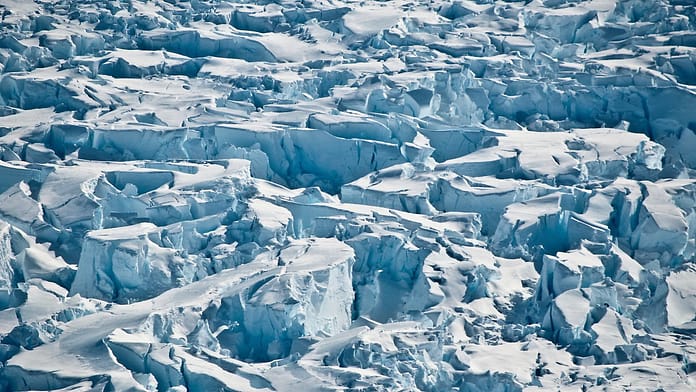Tuesday 26 October 2021
Five centimeters in 200 years
Glacier causes sea level to rise sharply
Researchers are concerned about the Pine Island glacier in West Antarctica. According to a study, melting ice could raise sea levels by two inches in the next 200 years. This also has to do with its own shape.
In the next 200 years, the Pine Island glacier in Antarctica alone could contribute five centimeters to rising global sea levels. By the end of the century it could reach two centimeters in length, according to American researchers in the specialized journal “science progressThe glacier melt currently accounts for about 40 percent of the ice loss in West Antarctica, which has been hit hard by the melting of Antarctic ice, Ian Joughin’s team at the University of Washington in Seattle explains.
The Pine Island glacier pushes ice into the Amundsen Sea in West Antarctica. There are wind patterns that change over decades that sometimes push deeper, sometimes less warm waters into glacier estuary regions. The scientists explained that this has led to a great deal of uncertainty in predictions about Antarctica’s contribution to sea level rise.
Using measurement data from 2017, Joughin and colleagues simulated glacier melting in a computer model for the next 200 years. They ran 30 simulations each of the melting rates of 57, 75, 100 and 125 billion tons of ice per year. “Despite the complexity of the model, the single value, the 200-year average rate of melt, almost entirely predicts the Pine Island glacier’s contribution to sea level rise over the next 200 years,” the researchers said. This finding could greatly simplify the calculation of future ice losses from similar glaciers.
The hypothesis could also apply to other glaciers
What really helps against climate change? Klima-Labour is an ntv podcast where Clara Pfeiffer And Christian Hermann Examine ideas that sound great, but may not be great at all. cows sigras feed? afforestation? artificial rain?
Climate Lab ntv: Listen to it every Thursday – half an hour teaches and it’s fun. On ntv.de, in the ntv app and wherever there are podcasts: sound nowAnd Apple PodcastAnd amazon musicAnd google podcastAnd spotifyAnd rss feed
This connection is probably due to the special shape of the Pine Island glacier: it is fed from a large watershed, but is relatively narrow towards the sea due to the shape of the landscape. In a confined space, the movement of ice accelerates, just as water flows faster in narrow passages. When the glacier meets the sea, the ice shelf on the water is also relatively narrow. “While our hypothesis is confirmed for one glacier, it likely applies to other narrow-shelved glaciers,” the study authors wrote. This should clarify further investigations.
Joughin and colleagues hypothesize that the Pine Island Glacier and other glaciers in the Gulf of the Amundsen Sea will lose a significant amount of ice after 200 years. Over several centuries, this could lead to a complete collapse of the West Antarctic ice sheet.
Scientists reported in April 2021 in the journal “Nature” that the melting of glaciers in Antarctica and Greenland has accelerated in the past two decades. In the first five years of this period it was 227 billion tons of ice, and in the last five years 298 billion tons. Global glacial meltdown of about 21 percent or 0.74 mm per year has contributed to the observed rise in global sea levels.


